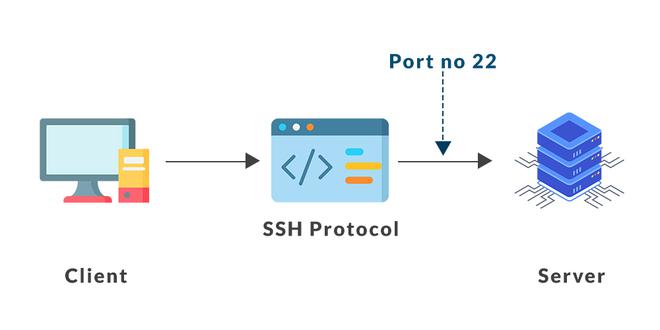
The private key is an integral part of an SSL certificate. It is used to send data between a server or client using an algorithm. Private keys are usually long strings of numbers or letters. To unlock your lock, you'll need to use a different method or install a new key certificate if you have lost it. Thankfully, there are a few ways to retrieve your forgotten key, so keep reading to find out how.
OpenSSL software is able to generate the private key on Linux-based operating platforms. The key is stored in a different place if you use Mac OS X. Particularly, the key is stored on a mac in a folder called "etc/certificates".
Fortunately, there is a way to retrieve your lost private key on Windows and Mac OS X. This article offers step-by–step instructions on how to retrieve your private key from your operating system. Although the steps are slightly different for Windows and Mac OS X users, the same process can be used.

First, you will need to identify which private key's most significant feature. You can find this information on Windows either in the Certificates and Certificates Snap-ins tabs, or via the Microsoft Management Console. The Apple Keychain app is the easiest way to retrieve your Private Key. From there, you can browse to the /etc/certificates/ directory.
You can also visit the cPanel website to see the available opportunities. A list of private keys should be available by clicking on the Privacy and TLS Manager tab. You should see all certificates in the certificate store. You can view the code for the private key by clicking the Details tab.
The command line can also be used to retrieve your private key. OpenSSL users will be able to use the -req command.
Private key path
Command> to retrieve the private keys from the corresponding directory. Alternatively, you could do a file search for a file with the "---BEGIN RSA PRIVATE KEY" header. If you don’t have the necessary knowledge about the file structure of your server's files, you may need to do some digging.
Finally, if you are fortunate enough to have DigiCert online utility, you may run the certutil command. This will retrieve your missing key. You can import your certificate, depending on your setup. To do so, you'll need to perform a re-key of your old certificate and generate a new one. By doing so, you'll have the ability to see your Private Key in all of its glory.

This tutorial will hopefully show you the mistakes to avoid when retrieving a Private Key. It is possible to retrieve your Private Key via a server but it is not guaranteed that the process will work.
FAQ
Can a strong portfolio make me more likely to get hired as web developer?
Yes. A portfolio is essential when landing a web designer or developer job. Portfolios must showcase your skills and experiences.
Portfolios are usually made up of examples of past projects. These can be anything that shows off your skill set. Portfolios should contain everything, from wireframes, mockups, logos and brochures to websites, apps, and websites.
What Kinds Of Websites Should I Make?
The answer to this question depends on your goals. You may choose to sell products online if you want to build a website. To make this happen, you'll need a reliable eCommerce website.
Blogs, portfolios and forums are all popular websites. Each requires different skills. To set up a blog for instance, you'll need to learn about blogging platforms like Blogger and WordPress.
It is important to choose the right platform for your site. There are many themes and templates that you can use for free.
Once you've selected a platform to build your website, you can start adding content. You can add images, videos, text, links, and other media to your pages.
You can publish your website online once you have launched it. Visitors can view your site online once it has been published.
What is responsive web design?
Responsive Web Design (RWD), is an approach to designing responsive websites. Content will display correctly on all devices, such as smartphones, tablets, laptops, tablets, and desktop computers. This allows visitors to view the website on one device and access other features like buttons, navigation menus, etc. RWD aims to ensure that every user who views a site is able to view it on any screen size.
A website that sells primarily through eCommerce would be an example of this. You want your customers to be able to purchase products from your store, even if they are viewing it on a phone.
A responsive website will adjust its layout automatically based on what device is used to view it. The site will display exactly the same way on a laptop as if it were viewed on a desktop computer. It will look different if you view the page from your phone.
This means that you can create one website that looks great across all devices.
How much does it cost to create an ecommerce site?
This depends on your platform and whether you hire a freelancer or go through a service provider. eCommerce websites start at about $1,000.
You can expect to pay between $5000 and $10,000 for a platform once you have decided.
If you're planning on using a template, you probably won't pay more than $5,000. This includes any customizing you do to your brand.
What Is Website Design Software?
Software for designing websites is used by photographers, illustrators and writers.
There are two types of website design software available: cloud-based and desktop apps. Desktop apps can be installed on your local computer. They also require that you install additional software. Cloud-based solutions are hosted remotely on the internet and require no additional software on your computer, making them ideal for mobile users.
Desktop Applications
Although desktop apps offer more features than cloud-based applications, they are not always required. Some people prefer working exclusively on a desktop app, as they find it easier. Some people prefer to use the same tool, regardless of whether it is on a phone or a laptop.
Cloud-Based Solutions
Web designers who wish to save time or money should consider a cloud-based option. These services enable you to edit any document from anywhere with an internet connection. This means you can work on a tablet while waiting for your coffee to brew.
You will still need to buy a license if you choose to use a cloud-based program. You won't need to purchase additional licenses if you upgrade to a later version.
These programs can be used in Photoshop, InDesign, Illustrator or any other Adobe product to create web pages.
How do you design a website?
Understanding your customers' needs is the first step. What do your customers want from you when they visit your website?
What problems might they have if they don't find what they're looking for on your site?
This knowledge will help you to identify the problems and then solve them. It is also important to ensure your site looks great. It should be easy to use and navigate.
Your site should be very well-designed. It should not take too much time to load. If it does take too long, people won't stay as long as they would like to. They'll leave and go elsewhere.
If you want to create an eCommerce site, think about where all of your products are located. Are they in one place? Are they spread around your site?
Decide whether you plan to sell one product at a time or several products. Are you looking to sell one product or several?
You can start building your site when you've decided on these questions.
Now, it's time to take care of the technical aspects. How will you site function? Will it be fast enough? Are people able to get it done quickly from their computers?
Are people able to purchase something without paying extra? Are they required to register before they can buy anything?
These are crucial questions you should be asking yourself. You'll be able to move forward once you have the answers to these important questions.
WordPress is it a CMS?
The answer is yes. It is a Content Management System (CMS). CMS is a way to manage your website content without having to use an application such Dreamweaver/Frontpage.
The best part about WordPress is that it's free! Hosting is included in the price, but you don't need to pay anything else.
WordPress was originally designed to be a blogging platform. However, WordPress now offers many options including eCommerce sites and forums, membership websites, portfolios and portfolios.
WordPress is easy to install and set up. The installation file must be downloaded from the website and uploaded to your server. Next, simply go to your domain name via your web browser and log into your new site.
After installing WordPress you will need to create a username/password. Once you log in, you will be able to access your settings from a dashboard.
Here you can add pages and posts, images, menus, widgets and plugins. This step can be skipped if editing and creating content is easy for you.
You can also hire a professional web design firm to help you with the whole process.
Statistics
- The average website user will read about 20% of the text on any given page, so it's crucial to entice them with an appropriate vibe. (websitebuilderexpert.com)
- It's estimated that chatbots could reduce this by 30%. Gone are the days when chatbots were mere gimmicks – now, they're becoming ever more essential to customer-facing services. (websitebuilderexpert.com)
- Did you know videos can boost organic search traffic to your website by 157%? (wix.com)
- At this point, it's important to note that just because a web trend is current, it doesn't mean it's necessarily right for you.48% of people cite design as the most important factor of a website, (websitebuilderexpert.com)
- It's estimated that in 2022, over 2.14 billion people will purchase goods and services online. (wix.com)
External Links
How To
How to use WordPress in Web Design
WordPress is a free software program that can be used to create websites and blogs. It has many great features, including easy installation, powerful themes options, plug-ins and many other. This website builder lets you customize your site to suit your preferences. It has hundreds of themes to choose from and many plugins to help you build any kind of site. You can also add your domain to the site. These tools allow you to easily manage the appearance and functionality of your website.
WordPress allows you to create beautiful websites even if you don't know how to code HTML. It doesn't matter if you don’t know much about coding. You can create a beautiful website in no time. This tutorial will show you how to install WordPress and walk you through the basic steps to create your blog. Everything will be explained so that you can follow the steps at home.
The most popular CMS (Content Management System) out there is WordPress.com currently has around 25 million users worldwide and counting. There are two different versions of WordPress available; you can either buy a license from them for $29 per month or download the source code and host it for free.
WordPress is often chosen for its blogging platform because of many factors. One of the best things about WordPress is its simplicity. Anyone who knows HTML can create beautiful websites. Its flexibility is another advantage. Many themes are free on WordPress.org, meaning you can change the look and feel of your site entirely without having to pay a penny. You can also customize it. Many developers offer premium add-ons that allow you to automatically update posts when someone comments on them or integrate social media sharing into your site.